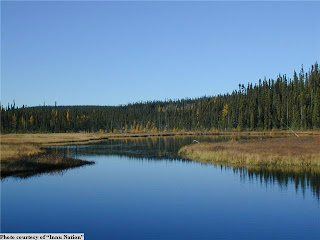 I visited several of my favorite local spots. I saw quite a few Savannah Sparrows at Wangunk Meadows along with Greater Yellowlegs, Bald Eagles, and FOY-Baltimore Orioles, Black-throated Blue Warbler, and Northern Waterthrush.
I visited several of my favorite local spots. I saw quite a few Savannah Sparrows at Wangunk Meadows along with Greater Yellowlegs, Bald Eagles, and FOY-Baltimore Orioles, Black-throated Blue Warbler, and Northern Waterthrush.  I finally was able to get close enough to a Wood Duck to get a decent photo. there was a pair in a corn field next to route 17. Usually they fly away before I even get a chance to see them or they're half a mile away. Mrs. Wood Duck seems a little camera shy.
I finally was able to get close enough to a Wood Duck to get a decent photo. there was a pair in a corn field next to route 17. Usually they fly away before I even get a chance to see them or they're half a mile away. Mrs. Wood Duck seems a little camera shy. - I was able to find some other FOY birds in other locations around town as well. I climbed to the top of Great Hill to find my first of the year Black and White Warbler. At some powerlines on Old Marlboro Turnpike I found Prairie Warbler and Eastern Towhee. I was happy to see that the Prairie Warblers showed up this year since the power company cut down a lot of the cedars since last spring. In the nearby reservoir there were plenty of Blue-grey Gnatcatchers making their tiny squeaking sounds as they moved stealthily from tree to tree.
- Here is of bird species that I, and another birder named Joe saw over the weekend. Any guesses on what our species total will be by May 17th?
-Great Blue Heron, Turkey Vulture, Canada Goose, Mute Swan, Wood Duck, Mallard, Hooded Merganser,Red-shouldered hawk,Red-tailed hawk,Wild Turkey, Killdeer, Greater Yellowlegs, Spotted Sandpiper,Rock Pigeon,Mourning Dove, Belted Kingfisher, Hairy Woodpecker, Northern Flicker,Red-bellied Woodpecker, Downy Woodpecker, Eastern Phoebe, Blue Jay, American Crow, Tree Swallow, Northern Rough-winged Swallow, Black-capped Chickadee,Tufted Titmouse, White-breasted Nuthatch, Carolina Wren, house Wren, Blue-grey Gnatcatcher, American Robin, European Starling, Eastern Towhee, Black and White Warbler, Yellow Warbler,Yellow-rumped Warbler,Pine Warbler, American Redstart (heard)Northern Waterthrush, Louisiana Waterthrush, Chipping Sparrow, Song Sparrow, Field Sparrow ,White-throated Sparrow, Savannah Sparrow, Red-winged Blackbird, Common Grackle,Brown-headed Cowbird, Cardinal, House Finch, American Goldfinch,House Sparrow, Wilson's Snipe ,Bald Eagle ,Warbling Vireo, Baltimore Oriole, Palm Warbler, Northern Waterthrush Black-throated Blue Warbler, Swamp Sparrow, Osprey, Sharp-shinned Hawk, Ruby-crowned Kinglet, Cedar Waxwing, Northern Mockingbird, Double-crested Cormorants, and Prairie Warbler.
Here is a short video of a Yellow Warbler singing. You can hear a second warbler singing in the background. I suppose they are trying to establish their property rights.
What new migrants have you seen this week?
 I'm participating in a Spring Census count. Each team keeps a list of species for a particular town between the period of April 25th and May 17th. I like this idea a lot
I'm participating in a Spring Census count. Each team keeps a list of species for a particular town between the period of April 25th and May 17th. I like this idea a lot
